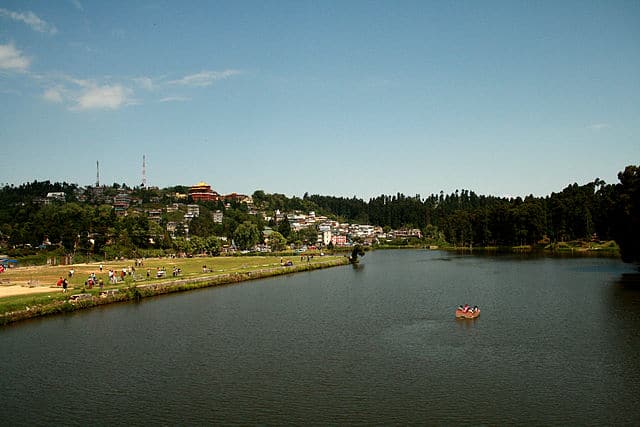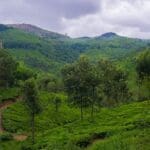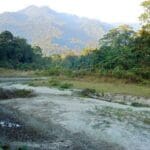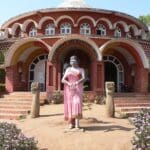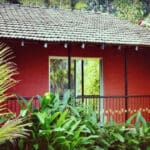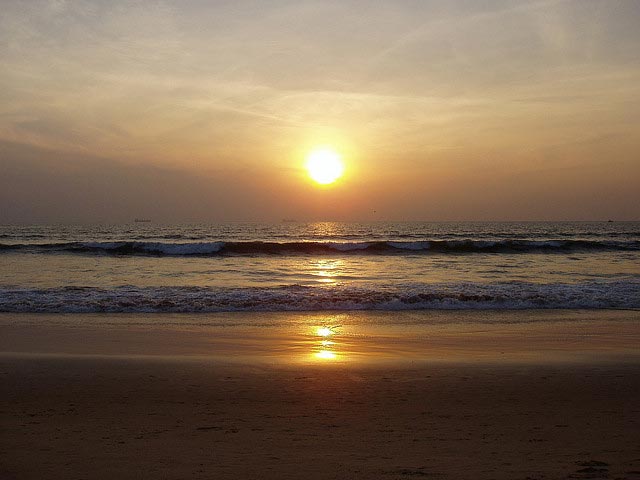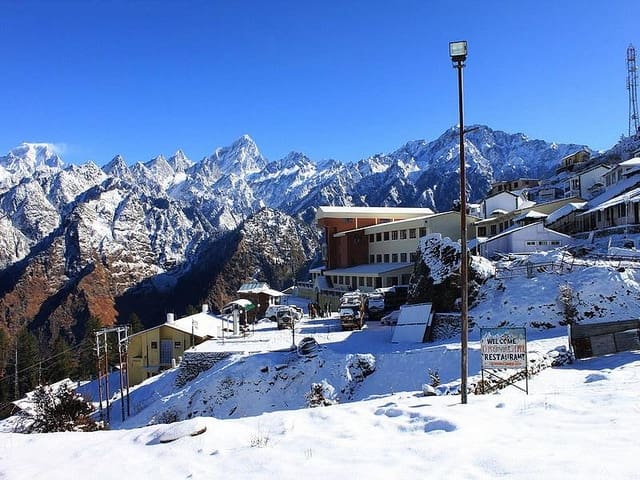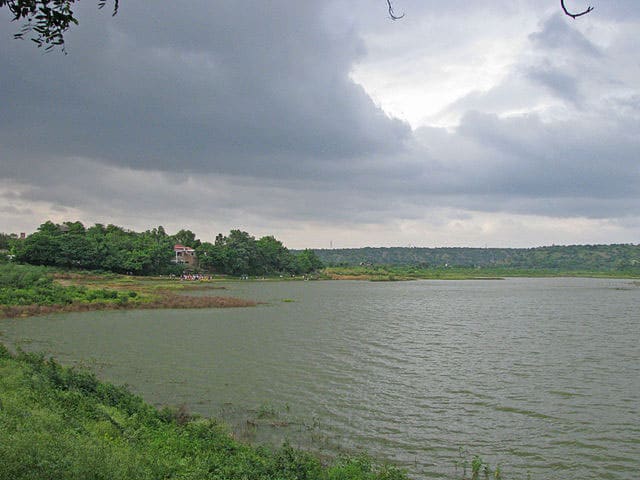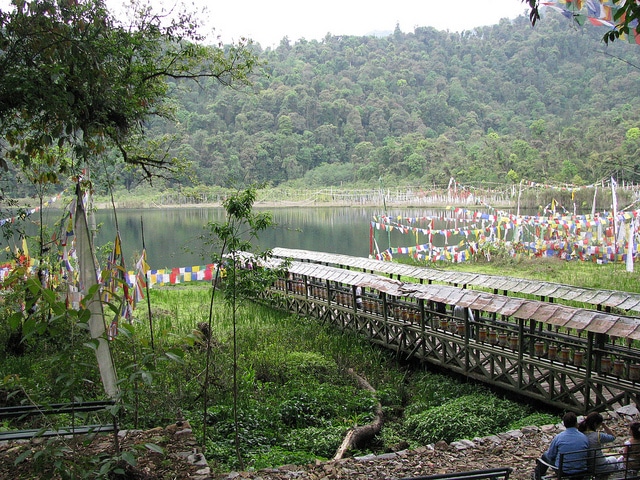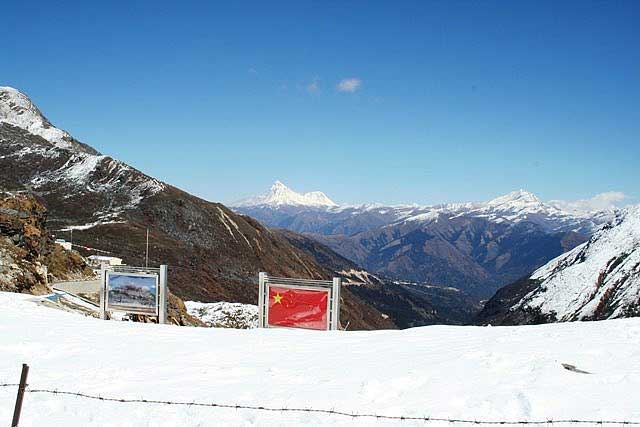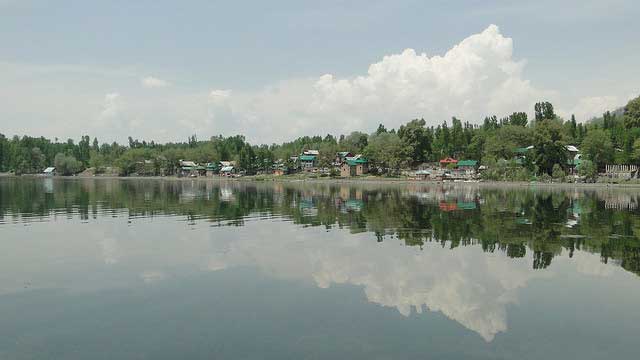Mirik, a jewel in the Darjeeling district of West Bengal, is celebrated for its tranquil atmosphere, picturesque views, and cultural richness. Tucked amidst rolling hills and acres of emerald tea gardens, Mirik is much more than a pit stop between Darjeeling and Siliguri—it’s a destination worth days of exploration. This comprehensive guide will immerse you in the details of the top 5 places to visit in Mirik and take you deep into the experiences, history, local color, and hidden gems that define this charismatic hill station.
Introduction to Mirik: Gateway to Serenity
Mirik sits at an altitude of about 1,495 meters (4,905 feet), enveloped by forests, flower gardens, and tea plantations. Its name comes from the Lepcha words “Mir-Yok,” meaning “Place Burnt by Fire,” alluding to local myths of ancient settlements. As a part of the Darjeeling Himalayan region, Mirik seamlessly blends natural beauty with Nepali, Lepcha, and Bengali cultural influences. The town welcomes you with gentle air, friendly smiles, and the promise of discovery.
Sumendu Lake (Mirik Lake): The Soul of the Valley
Overview and Location
At the center of Mirik lies Sumendu Lake, also called Mirik Lake, stretching 1.25 kilometers with reflections of pine-clad hills shimmering on its calm waters. The lake is divided by the graceful Indreni Bridge—“Rainbow Bridge”—a photogenic arched footbridge perfect for immersive walks.
Activities & Attractions
-
Boating: Paddle boats are available for hire, and gliding across the lake as mist rises from surrounding hills is an unmissable Mirik experience. Couples, families, and photographers find delight in the tranquil ride.
-
Horse Riding: Children and adults can enjoy gentle horse rides along the lakeside, guided by local handlers.
-
Walking Trail: A highly recommended 3.5km trail encircles the lake and offers vantage points, benches, and picture-perfect picnic spots.
-
Gardens and Pine Forests: One bank is lush with manicured gardens, flower beds, and shaded spots, while the other is wild with towering pines—a study in contrasts.
-
Bird Watching & Photography: The lake’s ecosystem attracts a variety of Himalayan waterfowl and birds, making it a paradise for enthusiasts.
Best Time to Visit
Early morning and late afternoon are ideal to catch the golden light over the waters and, on clear days, distant glimpses of Mt. Kanchenjunga shimmering above the horizon.
Insider Tips
-
Bring a packed lunch and spend the day lazing by the lakeshore.
-
Visit during March-April for spring blossoms or October-November for clear skies.
Bokar Ngedon Chokhor Ling Monastery: A Sanctuary of Peace
Background and History
Perched atop a hill close to Mirik, Bokar Monastery is a focal point of Buddhist teaching and meditation in the region. Established by Kyabje Bokar Rinpoche, the monastery belongs to the Karma Kagyu lineage and draws monks and practitioners from across the Himalayan belt.
Architectural Features
The monastery is adorned with:
-
Vibrant frescoes depicting stories from the life of Buddha.
-
Gilded statues and elaborately painted prayer halls.
-
Hundreds of prayer flags fluttering, blessing the valley with peace.
-
A giant prayer wheel at the entrance, spun by visitors for merit.
Experiences for Visitors
-
Attend Morning Prayers: The air fills with deep chanting, the sound of cymbals, and the scent of butter lamps.
-
Meditation Retreats: Short-term retreats and teachings may be available; it’s advised to inquire ahead.
-
Interaction with Monks: Many resident monks and novices are open to gentle conversation about Buddhism, meditation, and monastery life.
-
Festivals: During Losar (Tibetan New Year) and other major Buddhist festivals, the monastery becomes the heart of Mirik’s community celebrations with masked dances and traditional feasts.
Scenic Views
The hilltop location provides sweeping views of Mirik, bordering tea estates, and far-off Himalayan peaks—a panorama perfect for contemplation and photography.
Accessibility
It’s only a few minutes by car or a brisk uphill walk from Mirik Lake.
Tea Gardens of Mirik: Sip the Flavors of the Hills
Famous Estates & Features
Mirik’s hills are blanketed with legendary tea gardens, notably:
-
Thurbo Tea Estate: One of Darjeeling’s largest, celebrated for muscatel-flavored black teas.
-
Sourenee Tea Estate: Renowned for innovation in sustainable farming and premium teas.
-
Tingling View Point: Offers majestic sunrises over emerald slopes with workers delicately plucking leaves.
What to Do
-
Guided Plantation Tours: Local guides happily take visitors through the maze of tea bushes, sharing anecdotes about tea cultivation, history, and trade.
-
Meet the Pluckers: Observing (with respect) the skilled hands that harvest the “two leaves and a bud,” and learning about their lives, adds a soulful touch.
-
Tea Processing Factory: Inquire at larger gardens about visiting a processing unit—see firsthand how leaves are withered, rolled, fermented, and dried.
-
Tea Tastings: After the tour, sample different varieties of Darjeeling tea overlooking spectacular views.
Photography Opportunities
Sunrise and late afternoon reveal the most dramatic light and shadows on the green terraces, and during harvest season, the colorful garb of tea workers illuminates the gardens.
Tip
Buy fresh tea directly from the estate for the most authentic flavors.
Rameetay Dara Viewpoint: Where the Skies Kiss the Earth
Location and Access
Just minutes away from Mirik, Rameetay Dara is an elevated viewpoint and picnic spot, often overlooked by hurried tourists. Its name in Nepali means “Hillock of Joy.”
Why It’s Special
-
Breathtaking Vistas: Rameetay Dara offers a 180-degree panorama over Mirik valley, shimmering Sumendu Lake, distant tea gardens, and—on crystal-clear days—the regal snow-capped Kanchenjunga.
-
Serenity: Compared to other viewpoints, it’s less crowded, ideal for meditation, yoga, reading, and silent appreciation of nature.
-
Sunrise & Sunset: The changing tonal palette at dawn and dusk is one of Mirik’s most mesmerizing sights.
-
Bird Watching: Alpine swifts and wild pheasants are often sighted.
Tips for Visitors
Bring binoculars for distant mountain views and birds, pack a mat for a picnic, and arrive before dawn or stay till after sunset to witness the light show.
Pashupati Market: The Cross-Cultural Bazaar on the Border
Location and Overview
Pashupati Market is situated on the Indo-Nepal border, a short and picturesque drive from Mirik. The bustling border market is a unique melting pot of Indian and Nepalese traders.
Experiences
-
Shopping Galore: Renowned for imported electronics, clothing, footwear, perfumes, and curiosities, much at unbeatable prices.
-
Souvenirs: From hand-knit woolens to Nepali handicrafts, shoppers can find unique gifts and keepsakes.
-
Street Food: Sample local fare—spicy momos, sel roti, thukpa, spicy aloo chips.
-
People Watching: The daily cross-border ebb and flow create an always-changing scene of color and life.
Tips for the Market
-
Bargain politely; prices can be flexible.
-
Carry valid photo ID as the border is lightly regulated.
-
Remember that some imported goods may not carry warranties.
Other Notable Attractions in Mirik
While the top 5 places dominate most itineraries, Mirik offers myriad attractions to enrich your trip:
-
Don Bosco Church: Known for neo-gothic architecture and tranquil interiors, perfect for quiet reflection.
-
Devi Sthan (Singha Devi Temple): Set in a verdant grove on Sumendu Lake’s shore, a peaceful spot for devotees and those interested in local spirituality.
-
Mirik Helipad: Not operational for flights but provides panoramic views of the valley and is perfect for evening walks.
-
Orange Orchards: Bursting with fragrant blossoms in March and juicy fruit in winter, offering a sweet taste of local agriculture.
-
Orchid Nurseries: Cymbidium orchids, nurtured by Mirik’s unique climate, find their way into gardens and bouquets across the region.
-
Bunkulung (Jayanti Nagar): For rural tourism, stay with a farming family, fish in the streams, and hike through rice terraces.
Local Experiences: Beyond Sightseeing
Culture
Mirik is a blend of Lepcha, Nepali, Tibetan, and Bengali roots. Festivals such as Losar, Maghe Sankranti, Dashain, and Durga Puja are celebrated with exuberance.
Cuisine
-
Momos: Steamed or fried dumplings served with spicy chutneys.
-
Thukpa: A hearty noodle soup, warming on chilly evenings.
-
Alu Dum: A spiced potato delicacy, often enjoyed as street food.
-
Sel Roti: Sweet Nepali rice bread ring, especially during festivals.
In homestays and markets, try local teas, oranges, and fusion sweets blending Himalayan and Bengali influences.
Shopping and Handicrafts
Pashupati Market and local Mirik bazaars offer traditional carpets, handmade hats, woven bags, and indigenous jewelry.
Community Interactions
Many villagers host travelers for homemade meals, cultural performances, and storytelling sessions—unforgettable ways to understand the real Mirik.
Travel Essentials and Tips
-
Weather: Warm clothes year-round, even in summer. Monsoons bring mist and slippery paths (July–August).
-
Money: Limited ATMs—carry adequate cash.
-
Transport: Taxis, buses, and shared jeeps are the main options. Road quality is good, but mountain roads can be winding.
-
Connectivity: Mobile networks work but may drop near the Indo-Nepal border or high viewpoints.
-
Safety: Mirik is very safe for families and solo travelers; friendly locals are the rule.
Best Time to Visit Mirik
-
Spring (March–April): Flowering trees and cool, clear weather.
-
Monsoon (July–August): Misty, rain-kissed hills—romantic but wet.
-
Autumn (September–November): Crisp air and the best mountain views, especially post-monsoon.
-
Winter (December–February): Chilly but beautiful; orange orchards burst with fruit.
Recommended Itineraries
1-Day Excursion
-
Early morning: Arrive, breakfast at Summi Lake café, walk around Sumendu Lake.
-
Late morning: Bokar Monastery for prayers and monastery tour.
-
Afternoon: Tea estate walk and tasting.
-
Evening: Rameetay Dara for sunset.
2-Day/Weekend Getaway
-
Day 1: As above, plus orange orchards and Pashupati Market.
-
Day 2: Rural experience at Bunkulung, Don Bosco Church visit, temple sightseeing, and shopping in Mirik town.
Where to Stay: Accommodation in Mirik
-
Tea Estate Bungalows: Heritage charm, personal service, panoramic views.
-
Homestays: Immersive cultural experiences with home-cooked meals.
-
Hotels: Options range from upscale resorts overlooking the lake to budget guesthouses in town.
-
Best Picks: Consult recent guest reviews or seek recommendations from Mirik’s official tourism website for up-to-date options.
How to Reach Mirik
-
By Air: Nearest airport is Bagdogra (50km), well connected to major Indian cities. Taxis/private cars take 1.5–2 hours.
-
By Rail: New Jalpaiguri (NJP) is the nearest major railhead (52km).
-
By Road: Well-paved mountain roads connect Mirik to Siliguri (49km), Darjeeling (49km), and Kurseong (30km). Shared jeeps and state buses operate frequently. Private vehicles can be hired for hassle-free travel.
Responsible Tourism in Mirik
-
Respect Local Traditions: Particularly when entering monasteries, temples, or rural homes—dress modestly and ask before taking photographs.
-
Eco-Friendly Habits: Avoid plastic, use reusable water bottles, and don’t litter.
-
Support Local Businesses: Choose local guides and eat at family-run eateries for truly authentic experiences.
-
Wildlife and Plantlife: Admire from a distance; do not pick flowers or stalk wild birds.
15 Frequently Asked Questions About Mirik
1. What is the best time to visit Mirik?
The best time is March to June for blooms or September to December for fresh tea harvest and mountain views.
2. How do I reach Mirik from Siliguri?
Taxis, shared jeeps, and state buses ply a scenic 49km winding route from Siliguri.
3. What activities are available at Sumendu Lake?
Boating, horse rides, walking trails, picnics, and bird watching.
4. Can tourists visit Bokar Monastery?
Yes, visitors are welcome, but maintain silence during prayers.
5. What type of tea is produced in Mirik?
Darjeeling black tea, prized for its muscatel fragrance, from estates like Thurbo and Sourenee.
6. Is shopping at Pashupati Market worthwhile?
Absolutely—look for imported electronics, fashion, and unique Nepali handicrafts.
7. Are there good places to eat in Mirik?
Local dhabas, tea estate cafés, and street food vendors serve fresh, tasty options.
8. Is Mirik suitable for families and kids?
Yes. Safe, clean, and packed with gentle outdoor activities.
9. Does Mirik have luxury hotels?
Upscale tea estate bungalows and cozy lake-view resorts are available.
10. Will I see snow in Mirik?
Snow is rare, but frosty mornings are common in winter. Snow can be seen on distant Himalayan peaks.
11. What language is spoken in Mirik?
Nepali, Bengali, Hindi, and some English. Locals are friendly to tourists.
12. Are guides available for local tours?
Registered guides are available; your hotel or the local tourism office can help you book one.
13. Are there medical facilities in Mirik?
Mirik town has small clinics—carry basic medication and see a doctor for special needs in Siliguri.
14. Can I visit tea factories?
Some estates allow guided tours of their processing units—pre-booking is advised.
15. What souvenirs should I take home?
Darjeeling tea, local honey, orchids (in season), woollens, and Nepali handicrafts.


